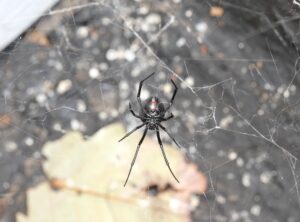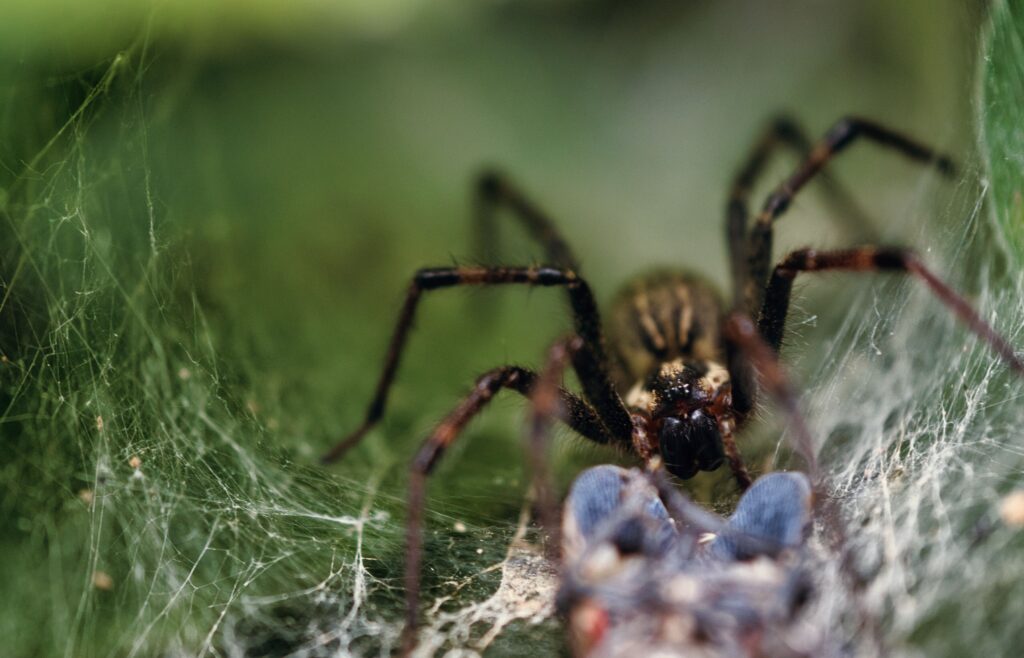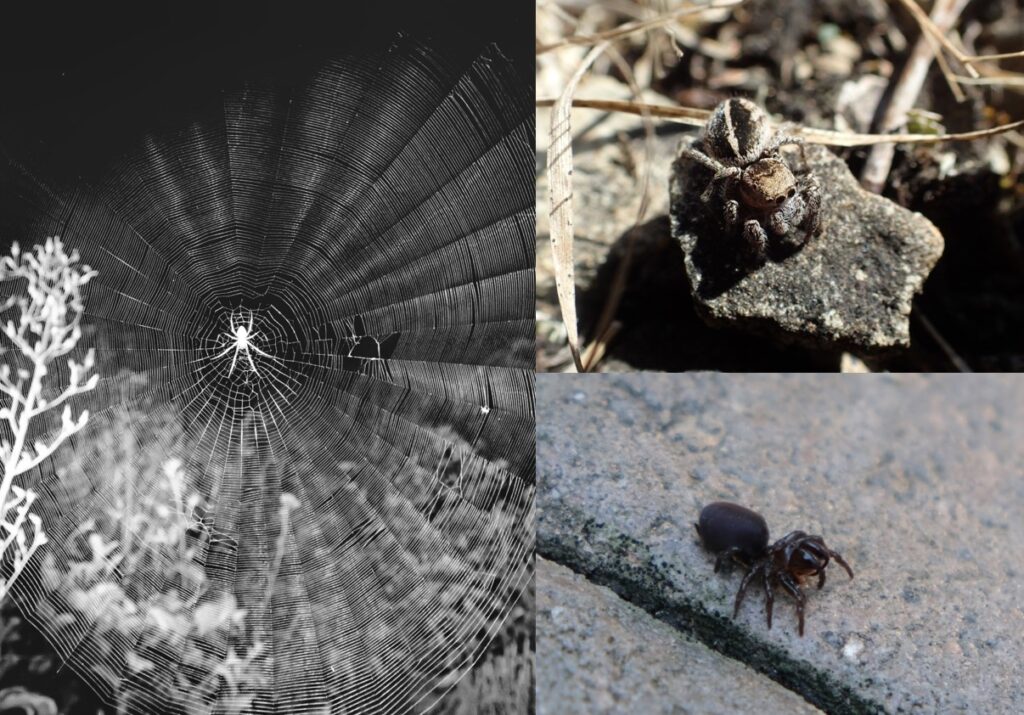
When Little Miss Muffet jumped up from her tuffet and ran to the nearest psychologist, her diagnosis was familiar: arachnophobia, the irrational fear of spiders. Fear and disgust are common emotions triggered by spiders. Most people dislike spiders but know very little about them.
Ironically, spiders experience “anthropophobia”, in this case a rational fear of humans. When threatened, a spider may raise its front legs in a defensive posture, bungee jump down a silk dragline, curl into a ball and play dead, escape into a retreat, or run away. A fleeing spider won’t get very far because they are built for short bursts of speed and are easily fatigued. As a last resort, and only if handled roughly, a spider may attempt a defensive bite; however, the fangs of many species are too small and weak to penetrate human skin.

The vast majority of spiders are harmless, and bites are extremely rare. However, Pennsylvania is home to two shy but medically significant species: northern black widow (Latrodectus variolus) and southern black widow (L. mactans). Only adult females are capable of envenomation. If bitten, seek medical attention. | Photo by Jason Ryndock
The primary use of spider venom is to paralyze or kill prey (mostly other arthropods). Once prey is immobilized, digestive fluid is regurgitated to predigest the meal, then sucked back into the mouth located behind the chelicerae (i.e., the prominent “jaws” that hold the fangs). Some spiders feed through a small hole in their prey, later discarding an empty shell, while others crush their prey into an unrecognizable pulp.
Spiders experience their world primarily through mechanical stimuli such as touch, air currents, and substrate or web vibrations, which are picked up by numerous hairs and other sensory structures. Smell and taste are also important, thanks to chemosensitive hairs on legs and palps. Although most species have eight eyes, vision is generally poor, except in certain groups that rely on vision for hunting (e.g., jumping spiders).

The hairs on this eastern funnelweb spider (Agelenopsis naevia), which just caught a spotted lanternfly, help it sense its environment. | Photo by Jason Ryndock
All spiders produce silk, a remarkable material that is exceptionally strong and elastic, with biomimicry applications in medicine and engineering. Spiders pull different types of silk from their spinnerets for various uses, such as thread attachment discs, draglines, sticky webs, and cocoons. Many species can “balloon” (at least as juveniles) by releasing silk threads that catch the breeze and carry the spider to new lands. Spider webs are wonderfully diverse, ranging from classic orbs to cobwebs, domes, sheets, funnels, casting nets, and spring-loaded traps. Not all spiders ensnare prey with webs, instead actively hunting or ambushing their quarry.

Clockwise from left: The gorgeous orb web of Acacesia hamata not only captures prey but transmits their vibrations; Habronattus orbus is a diurnal hunter that relies on vision; Purseweb spiders (Sphodros spp.) ambush prey crawling on the outside of their silk tubes by impaling them through the silk with long fangs. | Photo by Jason Ryndock
Spiders are ubiquitous predators of other arthropods, including pest species in agricultural systems. They are also an important and preferential food source for bird nestlings due to their high taurine content.
We can honor spiders by not using pesticides, conserving and restoring native habitats, and incorporating native plants and natural habitat structure (e.g. leaf litter) into our landscapes.
Written By Jason Ryndock
Ecological Information Specialist
PA Department of Conservation & Natural Resources
Bureau of Forestry | Natural Heritage Section




